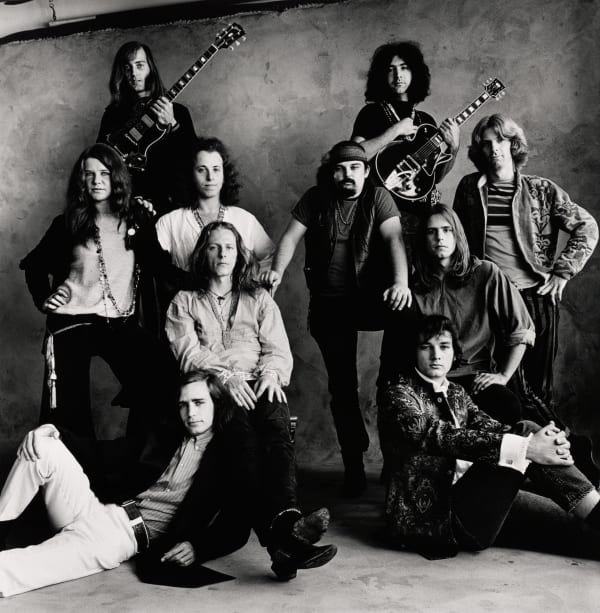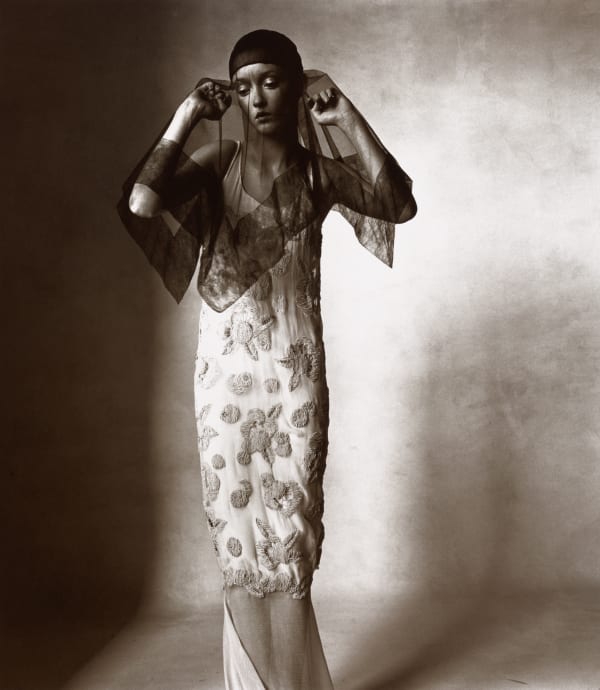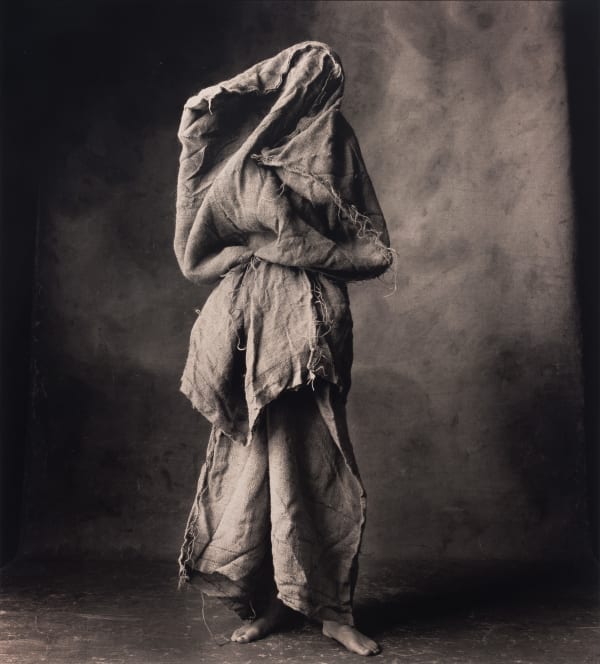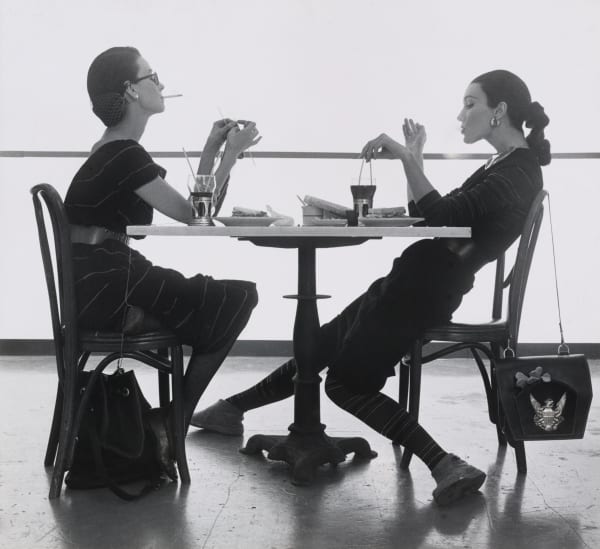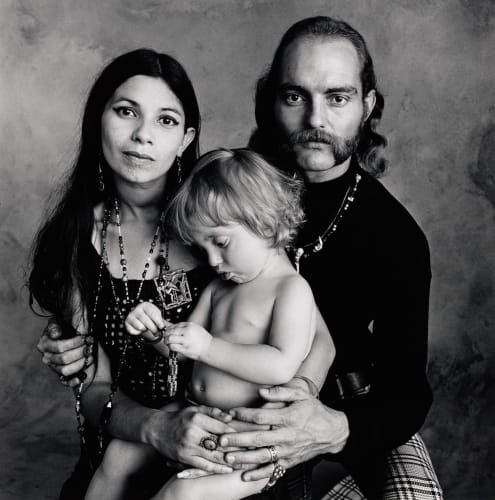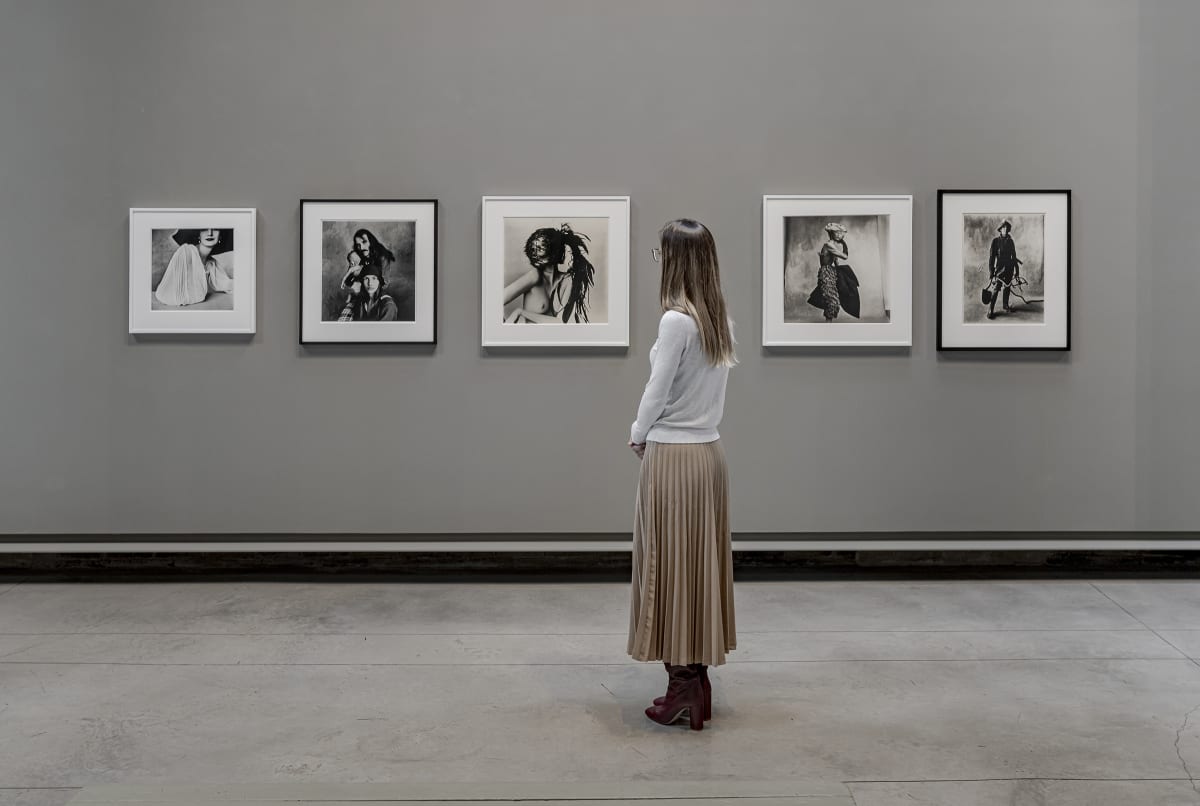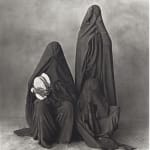Irving Penn - Small Trades, 1960s San Francisco, Fashion
-
 Irving Penn, Marchande de Ballons (B), Paris, 1950
Irving Penn, Marchande de Ballons (B), Paris, 1950 -
 Irving Penn, Rock Groups, San Francisco, 1967
Irving Penn, Rock Groups, San Francisco, 1967 -
 Irving Penn, The Tarot Reader (Jean Patchett & Bridget Tichenor), New York, 1949
Irving Penn, The Tarot Reader (Jean Patchett & Bridget Tichenor), New York, 1949 -
 Irving Penn, Telegraphiste, Paris, 1950
Irving Penn, Telegraphiste, Paris, 1950 -
 Irving Penn, Chanel Embroidered Dress, New York, 1998
Irving Penn, Chanel Embroidered Dress, New York, 1998 -
 Irving Penn, Chanel Feather Headdress (B), New York, 1994
Irving Penn, Chanel Feather Headdress (B), New York, 1994 -
 Irving Penn, Woman in a Burlap Sack, New York, 2007
Irving Penn, Woman in a Burlap Sack, New York, 2007 -
 Irving Penn, Plumber (A), New York, 1951
Irving Penn, Plumber (A), New York, 1951 -
 Irving Penn, Charwomen, London, 1950
Irving Penn, Charwomen, London, 1950 -
 Irving Penn, Hippie Family (Ferguson), San Francisco, 1967
Irving Penn, Hippie Family (Ferguson), San Francisco, 1967 -
 Irving Penn, Hell's Angels, San Francisco, , 1967
Irving Penn, Hell's Angels, San Francisco, , 1967 -
 Irving Penn, Women in Wartime (Dorian Leigh and Evelyn Tripp), New York, 1950
Irving Penn, Women in Wartime (Dorian Leigh and Evelyn Tripp), New York, 1950
-
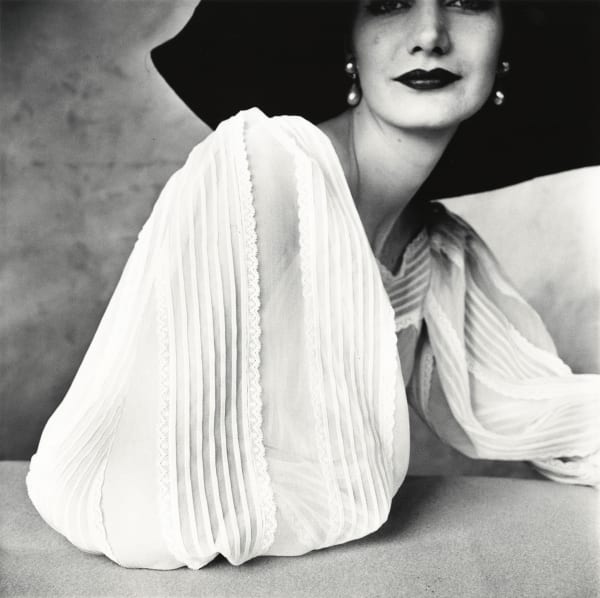
Irving Penn Exhibition Reviewed in Toronto Star
By Shinan Giovani December 9, 2021During the Irving Penn exhibition Small Trades, 1960s San Fransico, Fashion at Corkin Gallery, Jane Corkin spoke with Toronto Star columnist Shinan Giovani about the...Read more -
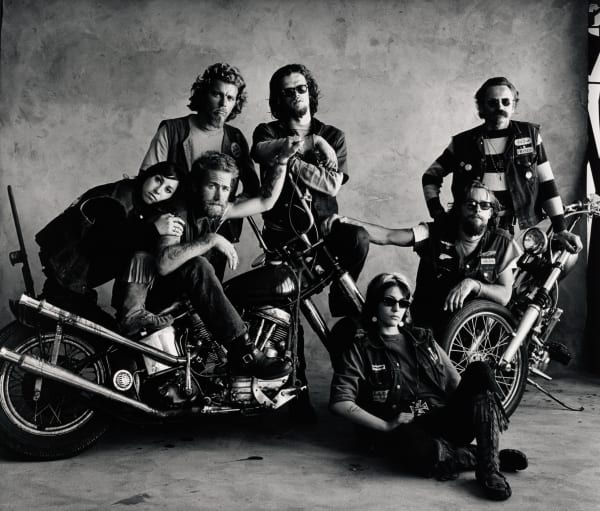
Irving Penn in Toronto Life
November 26, 2021STRIKE A POSE: Small Trades, 1960s San Francisco, and Fashion features the work of celebrated photographer Irving Penn. It focuses on three aspects of Penn’s...Read more
Corkin Gallery is honoured to present an exhibition of work by one of the most influential photographers of the twentieth century: Irving Penn (1917–2009). On view November 24, 2021 – March 26, 2022, at 7 Tank House Lane, the show brings together photographs spanning six decades of the artist’s career, revealing an unparalleled ability to elevate and dignify his subjects with exceptional expertise and rigorous attention to nuance and composition.
Focusing on three distinct bodies of work — Small Trades, 1960s San Francisco, and Fashion — the exhibition explores the intersecting roles of style and identity. For Penn, who worked as a photographer at Vogue for more than sixty years, the significance of fashion extended beyond haute couture; it was a form of self-expression and a signifier of status, character, and the human condition. Throughout his career, this conviction drew Penn to photograph people from all walks of life, lending the same compassion and meticulous attention to detail to tradespeople, folk singers, fashion models, and societal luminaries. Penn’s photographs — frequently made in a cool, northern light against a neutral backdrop — capture subjects in what he described as a “serene, true, and fairly restful moment,” allowing him to distill and honour their individual and essential qualities.
“Regardless of subject, every individual was photographed with a dignity and technical prowess that was unique to Irving Penn,” says Jane Corkin, owner of the gallery. “His work dismantled the formerly stark divides between high society and the working class. By challenging the rules and redefining who should be photographed, Penn paved the way for generations of artists whose work continues to break with traditional archetypes of status, luxury, and beauty.”
The exhibition features more than 40 photographs, including masterful examples from the following series:
Small Trades (1950–51): Produced in Paris, London, and New York, Small Trades — petits métiers — was a celebration of workmen, street vendors, and skilled tradespeople. Building on the 19th-century tradition of occupational portraits, Penn captured subjects in their uniforms and work clothes holding their tools, which served not only as symbols of their vocation, but also their status in society. Penn, who himself was the son of a Russian émigré, photographed these workers with the same precision and care as the models who filled his studios, elevating a traditionally overlooked class among fashion’s elite. This unprecedented maneuver anticipated the cultural shift to come in the 1960s. Many of the Small Trades photographs on view in the exhibition were published in Vogue in 1950, and the series went on to comprise the largest body of work in the artist’s career.
San Francisco (1967): The 1960s and ‘70s were defining decades for photography as an art form. During the peak of San Francisco’s counterculture movement, Penn travelled to the west coast to capture its central figures: young hippie families, emerging musicians, such as Big Brother and the Holding Company, and Hells Angels bikers. Penn was a master of the group portrait, constructing balanced compositions that celebrated both the individual and the collective. Hippie Family (Kelley) and Hippie Family (Ferguson), which both possess striking formal similarities to Rafael’s Madonna and Child, became almost immediate icons of the cultural moment.
Fashion (1949–98): Penn’s approach to fashion photography revolutionized the practice in the postwar period. His intense respect for not only the garments he captured, but also the distinct personalities of the models who adorned them, injected new life and subjectivity into a formerly documentarian practice. Posed seated or standing, the women featured in Penn’s photographs evoke undeniable charisma and wit, while couture plays a compositional role grounded in structure and silhouette. Created during his decades-long career at Vogue, Penn approached fashion with a critical and, at times, skeptical eye, a perspective that enabled him to transform of-the-moment designs into timeless yet unexpected images.
Born in 1917 in Plainfield, New Jersey, Penn trained in design at the Philadelphia Museum of Industrial Art. After spending a year painting in Mexico, he moved to New York City to work at Vogue under the recently-appointed Editorial Director Alexander Liberman, who went on to become a vocal champion of Penn and whose influence played a significant role in his artistic development. During his lifetime, Penn produced photographs that spanned artistic, sartorial, and advertising sectors, breaking with traditional hierarchies and solidifying photography’s place in the world of postwar and contemporary art.
This exhibition marks Corkin’s fourth presentation of photographs by Penn, the first of which was held in 1979, the year the gallery was founded. Corkin Gallery remains the only gallery or museum in Canada to have ever presented a solo exhibition of the artist’s work. Over the last seventy years, there have been more than 100 exhibitions dedicated to Penn at major institutions and galleries globally, including retrospectives at the Art Institute of Chicago (Chicago, USA), Grand Palais (Paris, France), The Metropolitan Museum of Art (New York, USA), Moderna Museet (Malmö, Sweden), Museum of Modern Art (New York, USA), Smithsonian American Art Museum (Washington, DC, USA), State Hermitage Museum (St. Petersburg, Russia), and Victoria and Albert Museum (London, UK).



